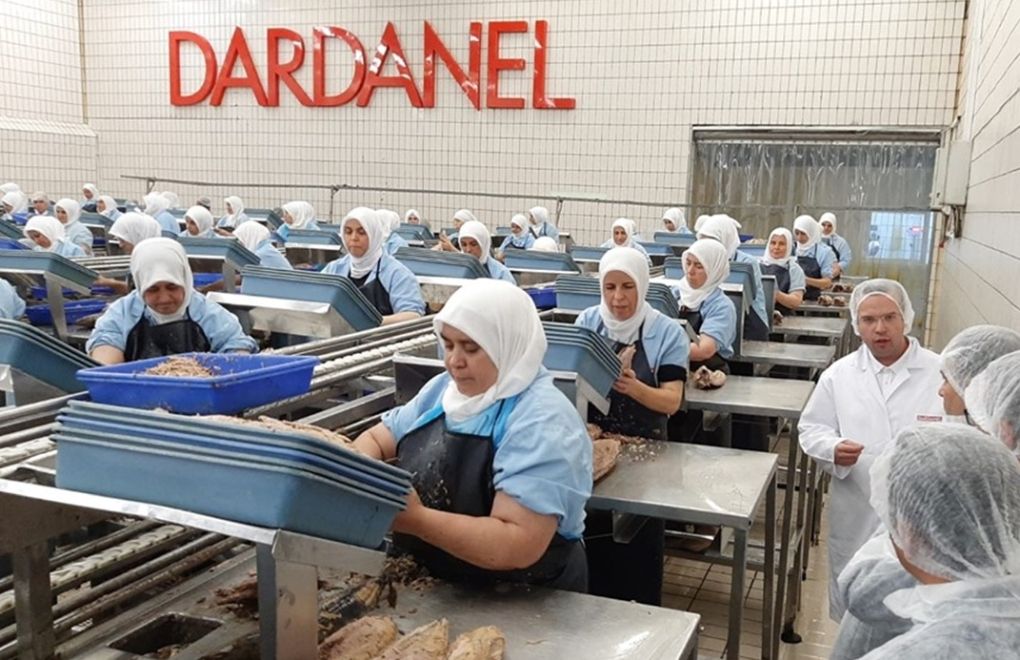* Photo: Çanakkale Kalem
Click to read the article in Turkish
In the 40th year of the September 12 military coup, the Confederation of Progressive Trade Unions of Turkey (DİSK-AR) has released a report entitled "How did September 12 destroy labor rights?"
The report of the confederation has shared a detailed description of how the coup and its aftermath have destroyed workers' rights in Turkey. It has also shown the current scale of privatization in Turkey, which started in the post-coup period in 1980 and increasingly continued afterwards.
According to the report, the "economic stability" decisions announced by the government on January 24, 1980 and the military coup on September 12 paved the way for the policies of privatization, which would be adopted during late Turgut Özal's term in office as the Prime Minister after the coup.
Against this backdrop, the report has manifested that while 68 billion dollars of privatization have been done since 1980, 60 billions of this have been undertaken in the era of the ruling Justice and Development Party (AKP).
"The entire accumulation of the Republic has been destroyed," the report has protested within this context, noting that the erosion of workers' wages has reached record high levels. According to the report, while the minimum was over 3.4 percent of per capita income, it is now below 40-45 percent.
The report has calculated that if the minimum wage had been increased depending on the increase in the per capita income after 1978, the minimum wage would be 4 thousand 507 lira today. However, the current minimum wage is 2 thousand 558 lira in Turkey.
Severance pay and premiums cut
Drawing a parallel between the post-coup era and today, the report has indicated that one of the first things that was done after the coup in 1980 was to cut severance pay and premiums of workers.
According to the report, while the severance was 7.5 times higher than the minimum wage in 1978, the link between the two was severed in 1982, which has led to a rapid decrease in the severance pay.
After the AKP came to power in 2002, the severance pay was 4.4 times higher than the minimum wage in 2003. However, in 2020, the upper limit of the severance pay is now 2.4 times higher than the minimum wage. The share of the public institutions in employment has also deteriorated in 40 years. While 36 percent of all insured workers were civil servants in 1980, this share dropped to 8 percent in 2015 as a result of privatization.
Other highlights from the report are as follows:
- Unions under pressure for 40 years: With September 12, the bans on lockout and strike entered the Constitution, strikes for rights were banned and unions were banned from engaging in politics. It was made harder to establish unions and engage in union activities.
- Unionization prevented for 40 years: While the rate of unionization was around 40 percent in 1980, it dropped below 14 percent in 2020. Even though the number of insured workers has increased by 7 times and a great number of people have become workers, the number of unionized workers has only doubled. Non-organization has been imposed on the working class.
- The right to collective bargaining seized for 40 years: When the DİSK was closed after the coup on September 12, 1980 and since union activities were allowed in 1984, there has been a significant deterioration in the number of workers within the scope of collective labor agreements.
- Strikes banned for 40 years: With the military coup on September 12, all strikes were banned and the right to strike was suspended till 1984. As a result of the legislation enacted by the putschists, it has become harder to organize and use the right to strike. While 80 thousand workers went on strike in 1980, when there were 2.2 million insured workers, less than 6 thousand workers on average went on strike in the AKP era, when there are 11 million insured workers.
- Exploitation increasing for 40 years: The deterioration of workers' wages after 1980 can also be traced in the relationship between the productivity per worker and the increase in real wages of workers. While the productivity per worker increased from 100 in 1978 to 236 in 2005, the real wage per worker dropped from 100 to 98.6. More recently, while the labor productivity per hour was 100 in 2009, it increased by 23.5 units in 2019. However, the real wage index, which was 100 in 2009, increased only by 5.8 points in 2019.
- Income distribution imbalanced for 40 years: The January 24 decisions and September 12 coup have impaired the income distribution. While the share of wages in the national income was 35.19 percent in 1978, it fell to around 14 percent in the 1990s.
(HA/SD)






